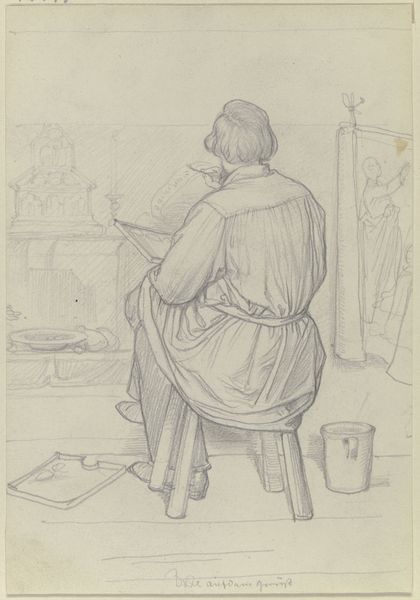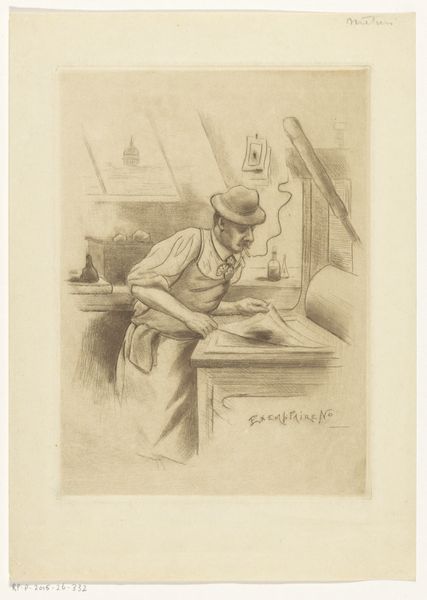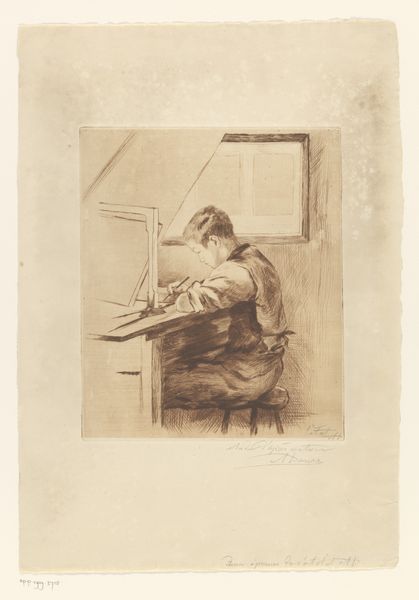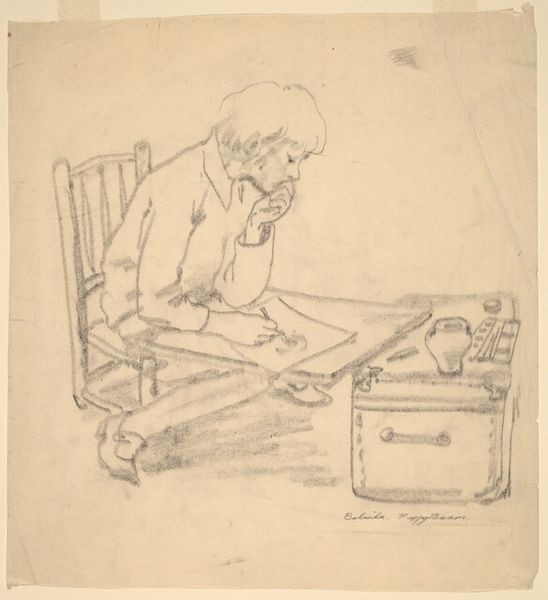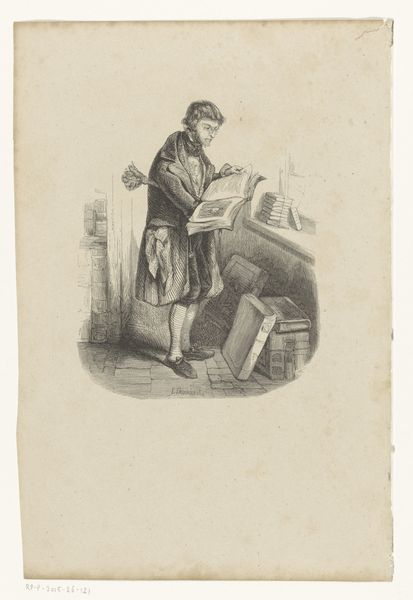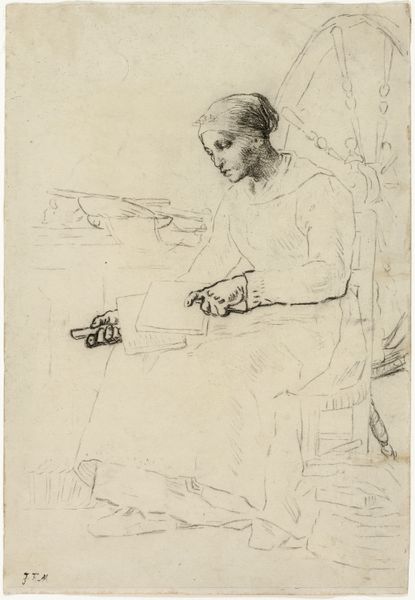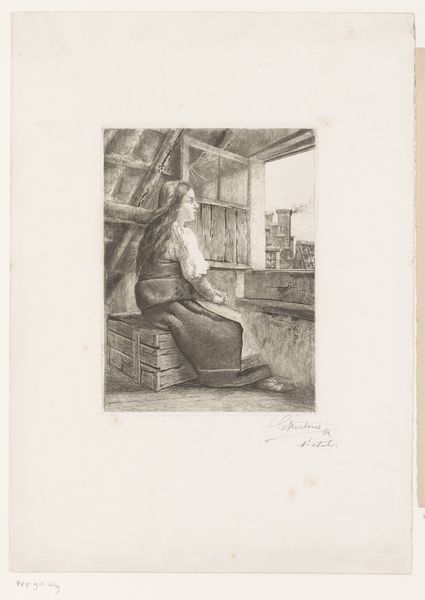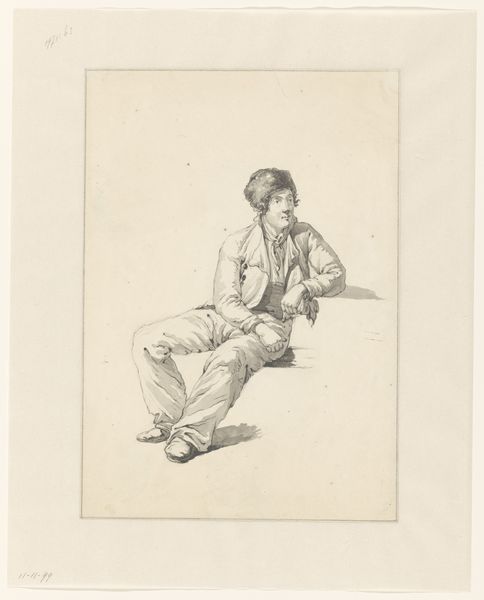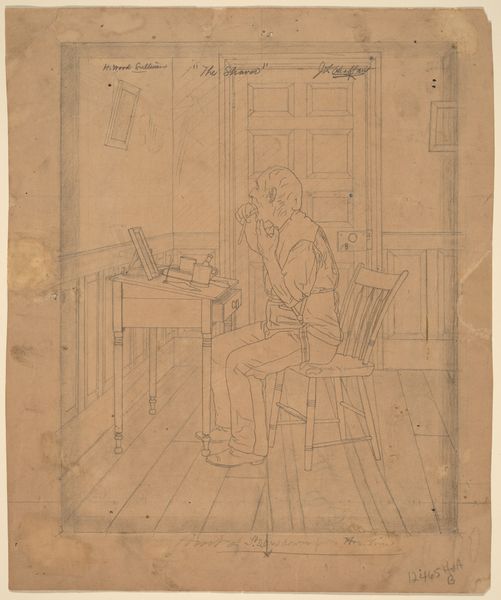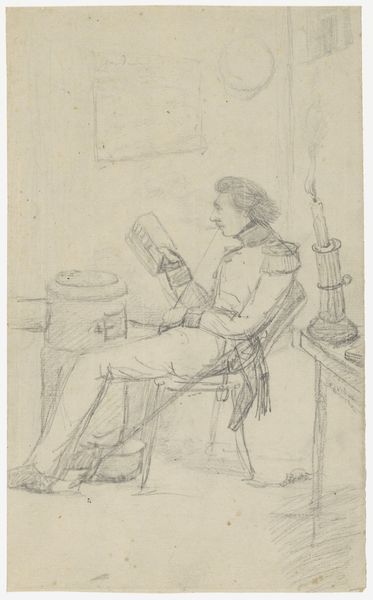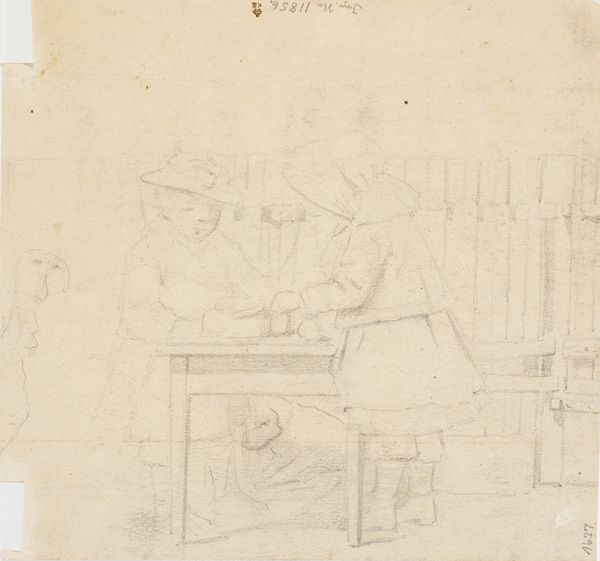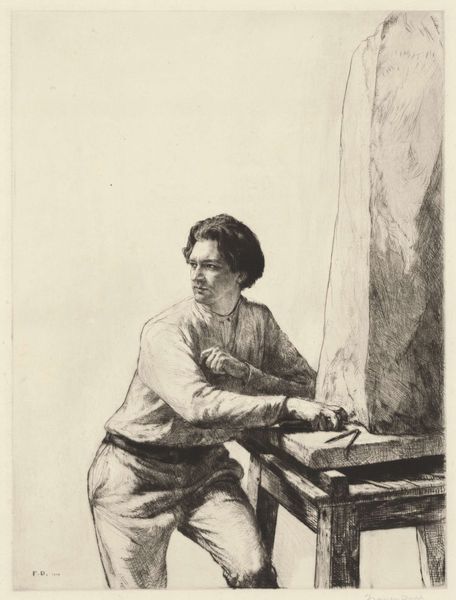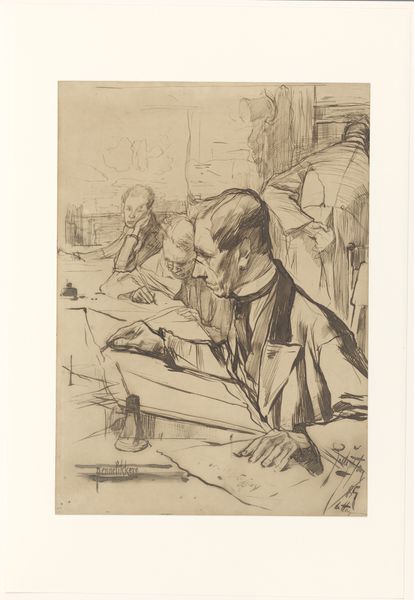
drawing, pencil
#
drawing
#
self-portrait
#
romanticism
#
pencil
#
genre-painting
Dimensions: sheet: 25.6 × 19.4 cm (10 1/16 × 7 5/8 in.)
Copyright: National Gallery of Art: CC0 1.0
Curator: Editor: So, this drawing is entitled "Self-Portrait Working at a Lithographic Press" by Julius Adam the Elder, created in 1847. It is a pencil drawing. There’s a feeling of industriousness about it, don’t you think? What’s your take? Curator: Indeed. Consider the historical context: this piece emerges in a period of increasing industrialization and evolving class structures. Adam’s depiction of himself actively engaged in lithography, a then relatively new and accessible printing technique, suggests a democratization of art production. How do you interpret his choice to portray himself not as the traditional 'artist' but as a working craftsman? Editor: That’s interesting! It sounds like the artist is commenting on the changing role of the artist, no longer the romantic genius but someone engaged in the practical world? It seems very self-aware. What implications would this have for broader social and political spheres at that time? Curator: Precisely. His self-portrait challenges the notion of artistic genius being separate from manual labor. By representing himself working, Adam potentially aligns himself with the emerging working class, and moreover hints at how art could serve as a tool for social commentary and perhaps, empowerment. Do you see elements of Romanticism subverted or upheld? Editor: That’s a tough question. It seems like subversion, as you said. He is not creating this grand artistic persona, but rather he grounds his artistry within the realm of everyday labor, defying conventional romantic ideals of artistic isolation. So would you say this a progressive piece for its time, socially? Curator: Yes, I'd argue this self-portrait encourages us to question artistic identity, production, and its potential to reflect socio-political dynamics. It invites reflection on art's purpose during social transformation. Editor: Wow, that shifts my whole perspective! Thanks for opening up those avenues for interpreting the work. Curator: My pleasure. Art thrives when viewed through lenses of historical and social awareness, prompting critical dialogues.
Comments
No comments
Be the first to comment and join the conversation on the ultimate creative platform.
